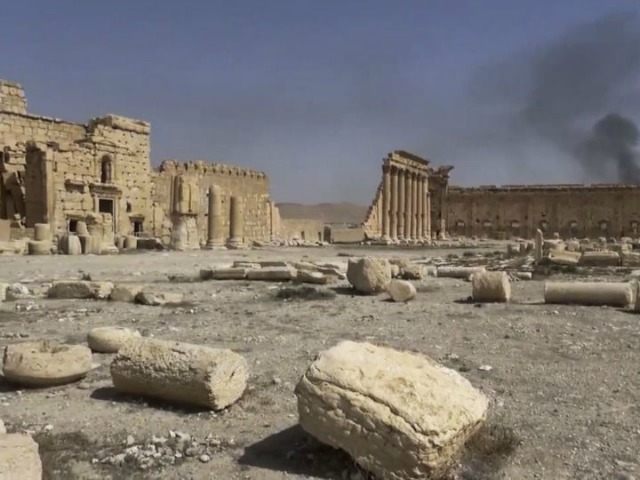The Syrian regime led by President Bashar al-Assad has attacked the Islamic State (ISIS/ISIL) at newly conquered Palmyra, a UNESCO World Heritage Site, resulting in damage to the ancient relics.
“This [attack] was done by the Syrian regime,” explained resident Osama Alkhateb. “But we don’t know why as there was nothing to hit apart from the ruins. There is no Isil in the area: they are all at least two kilometres [1.2 miles] away.”
The attacks damaged the northern wall “alongside the Temple of Bel-Shamin.” Another attack on Monday damaged a museum in Maaret al-Numaan. The barrel bomb collapsed one wall of the building. In late May, footage showed damage to the ancient buildings after an attack by the regime.
“The air force struck more than 160 Daesh targets, killing and wounding terrorists and destroying weapons and vehicles equipped with machine guns,” claimed a source within the Syrian Air Force. “We are pursuing Daesh wherever they are. Military operations, including air raids, are ongoing in the area around Al-Suknah, Palmyra, the Arak and Al-Hail gas fields and all the roads leading to Palmyra.”
ISIS captured the city in May. The international community expressed concern that the terrorists would destroy the protected relics, since they are known to demolish anything they believe promotes “idolatry.” The group released a video to assure the world the ancient ruins were safe but held mass executions at the amphitheater.
A day later, an ISIS commander declared the terrorists would only destroy items that “promote idolatry.” Everything else, he claimed, would remain untouched: “Concerning the historic city, we will preserve it and it will not be harmed, God willing,” said the commander. “What we will do is break the idols that the infidels used to worship. The historic buildings will not be touched and we will not bring bulldozers to destroy them like some people think.”
One resident witnessed the militants “crushing the ‘god lion’ statue with construction machines. The “god lion” statue dated back to the first century AD. The lion stood guard at the Temple of Bel in Palmyra. The temple was dedicated to the god Bel, who was worshiped with Aglibol and Yarhibol. The lion, though, was dedicated to Al-lāt, an Islamic goddess for “Springtime and Fertility, the Earth-Goddess who brings prosperity.” She is often identified with goddesses Al-Uzzā and Menāt, who are sometimes referred to as the daughters of Allah. Herodotus, a Greek historian, equated her with Aphrodite, while others placed her next to Athena. She is known as “the Mother of the Gods” or the “Greatest of All.”
Palmyra, 134 miles north of Damascus, is considered an oasis, surrounded by beautiful palm trees. The city first appeared in record in 2000 BC but became very important under the control of the Roman Empire:
It grew steadily in importance as a city on the trade route linking Persia, India and China with the Roman Empire, marking the crossroads of several civilisations in the ancient world. A grand, colonnaded street of 1100 metres’ length forms the monumental axis of the city, which together with secondary colonnaded cross streets links the major public monuments including the Temple of Ba’al, Diocletian’s Camp, the Agora, Theatre, other temples and urban quarters. Architectural ornament including unique examples of funerary sculpture unites the forms of Greco-roman art with indigenous elements and Persian influences in a strongly original style. Outside the city’s walls are remains of a Roman aqueduct and immense necropolises.

COMMENTS
Please let us know if you're having issues with commenting.